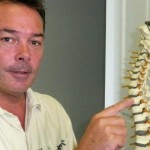 As anesthetists, we are frequently called upon to administer safe and effective anesthesia to patients with cervical spine disease. Patients with symptomatic spondylosis or stenosis have symptoms of myelopathy and/or radiculopathy. The goal for the surgeon and the anesthetist is for the patient to be free of neurologic symptoms postoperatively.
As anesthetists, we are frequently called upon to administer safe and effective anesthesia to patients with cervical spine disease. Patients with symptomatic spondylosis or stenosis have symptoms of myelopathy and/or radiculopathy. The goal for the surgeon and the anesthetist is for the patient to be free of neurologic symptoms postoperatively.
Somatosensory evoked potential (SSEP) monitoring has been used to detect adverse surgical effects on nerve roots during scoliosis surgery. In recent years, SSEP monitoring has been used increasingly for other types of spine surgery, including decompression. This study was done to evaluate the value of the use of SSEP for Cervical Decompression surgery.
Dr. VINCENT C. TRAYNELIS, MD a Neurosurgeon from Rush University did a comprehensive record review of cases involving decompression of the Cervical Spine between 2000 and 2009. The results were published in J Neurosurg Spine. (2012 Feb;16(2):107-13. Epub 2011 Nov 11.) The records of 720 patients who had a total of 1,534 levels decompressed without the use of SSEP were reviewed. Specifically, the authors were seeking new neurological symptoms related to the surgery. They found 3 patients with new neurologic symptoms after surgery, 1 had a preoperative diagnosis of radiculopathy, while the other 2 were treated for myelopathy. The new postoperative deficits completely resolved in all 3 patients and did not require additional treatment.
The authors concluded that decompression of the cervical spine without intraoperative monitors is not only safe but offers a significant savings. In this case, the authors speculated that the cost of monitoring the patients who were reviewed would have been 1,024,754.
Click here to read the original abstract and return to procrna.com to leave a comment.

Thank you for giving information on spine surgery.It is really good and helpful for the people.Keep giving such a valuable information.I will wait for your next post.